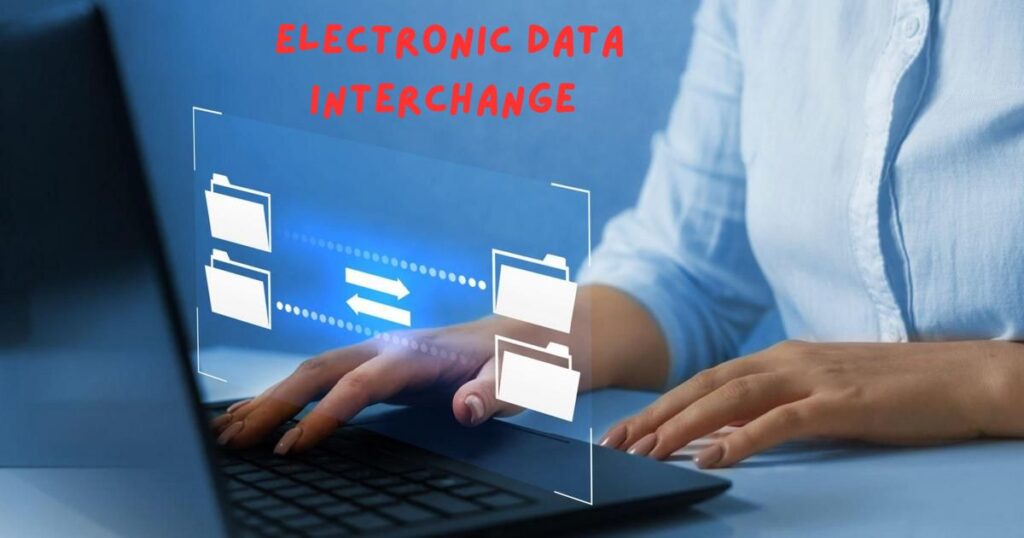In today’s fast-paced digital economy, electronic payments have become the lifeblood of commerce. Yet, for many Americans, the appearance of unfamiliar charges on their bank statements can be a source of confusion and concern.
One such enigma that’s been catching the eye of vigilant account holders is the NWEDI Payments Flex Charge. If you’ve ever scratched your head wondering about these mysterious entries, you’re not alone.
In this comprehensive guide, we’ll dive deep into the world of NWEDI payments, unraveling the complexities and equipping you with the knowledge to navigate this aspect of modern financial transactions confidently.
What Are NWEDI Payments Flex Charges?
NWEDI Payments Flex Charges are transaction fees associated with electronic payments processed through the NWEDI network. But what exactly is NWEDI? Let’s break it down:
NWEDI stands for a specific electronic payment network used by businesses to send and receive Electronic Data Interchange (EDI) payments. These charges typically appear on bank statements within one to three business days after an EDI payment is processed.
The “flex” in NWEDI Payments Flex Charges refers to the flexible nature of these fees, which can vary based on the transaction type and volume.
According to financial expert Jack Bogle, in an article dated May 26, 2024, “When you see an MSFX or NWEDI Payments Flex Charges, it’s typically linked to services or products that offer flexible payment options, allowing for more manageable and scheduled payments over time.”
Key Features of NWEDI Payments Flex Charges:
- Typically range from $1 to $3 per transaction
- Designed to cover the costs of securely processing EDI payments
- May appear as “NWEDI EDI PYMNTS” on bank statements
- Often accompanied by the payment amount and date
It’s important to note that while these charges are small individually, they can add up for businesses processing a high volume of transactions. This is why understanding and managing these fees is crucial for maintaining healthy financial operations.
Understanding Electronic Data Interchange (EDI)

To truly grasp the concept of NWEDI Payments Flex Charges, it’s crucial to understand the underlying technology: Electronic Data Interchange (EDI). EDI is a system that allows businesses to exchange documents and financial information electronically, replacing traditional paper-based methods.
EDI revolutionized business-to-business transactions in the USA by:
- Streamlining communication between companies
- Reducing errors associated with manual data entry
- Speeding up transaction processing times
- Enhancing security in financial data exchange
The implementation of EDI systems has been a game-changer for many industries, particularly those dealing with high-volume transactions or complex supply chains.
For instance, the retail sector has seen significant improvements in inventory management and order processing since adopting EDI technologies.
Types of EDI Payments You Might Encounter
| EDI Payment Type | Description | Common Use Cases |
| Direct EDI | Immediate transfer between banks without using the ACH network | Large B2B transactions, urgent payments |
| Check Conversion | Transforms paper checks into electronic funds for faster posting | Converting traditional payments to digital format |
| Payroll EDI | Used for direct deposit of employee salaries | Regular wage payments, especially for large employers |
| File Transfer | Sends payment details electronically to initiate funds transfer | Batch processing of multiple payments |
| Purchase Order EDI | Allows electronic receipt of purchase orders from buyers | Streamlining procurement processes |
| Accounts Payable EDI | Handles inbound supplier invoices and outbound remittance advice | Managing vendor payments efficiently |
Each of these EDI payment types may incur NWEDI Payments Flex Charges, depending on the specific arrangements between businesses and their financial institutions. Understanding which type of EDI payment you’re using can help you better anticipate and manage associated fees.
Read this Post: Pacers vs Knicks Match Player Stats
The Evolution of Electronic Payments: From Paper to NWEDI
To appreciate the significance of NWEDI Payments Flex Charges, it’s helpful to consider the evolution of payment systems:
- Paper Checks: The traditional method, slow and prone to errors.
- ACH (Automated Clearing House): Introduced electronic transfers but with slower processing times.
- Wire Transfers: Offered speed but at a higher cost.
- Credit Card Networks: Provided convenience but with higher fees for merchants.
- EDI Systems: Brought efficiency and standardization to B2B transactions.
- NWEDI and Similar Networks: Enhanced EDI with more flexible, specialized services.
This progression demonstrates how payment systems have continually evolved to meet the changing needs of businesses and consumers, with each step bringing new benefits and challenges.
NWEDI Payments Flex Charges vs. Other Electronic Payment Fees
To put NWEDI Payments Flex Charges into perspective, it’s helpful to compare them with other common electronic payment fees:
- ACH Fees: Generally lower than NWEDI charges, often ranging from $0.20 to $1.50 per transaction.
- Wire Transfer Charges: Typically higher, ranging from $15 to $50 per domestic transfer.
- Credit Card Processing Fees: Usually a percentage of the transaction amount, averaging 1.5% to 3.5%, plus a per-transaction fee.
- EFT (Electronic Funds Transfer) Fees: Can vary widely but are often in the same range as ACH fees.
- US Connect Charge: Another specialized fee that may appear alongside or instead of NWEDI charges for certain types of transactions.
NWEDI Payments Flex Charges often fall in the middle ground, providing a balance between cost-effectiveness and the advanced features of EDI transactions.
This positioning makes them an attractive option for businesses that require more sophisticated payment processing than basic ACH transfers but don’t want to incur the high costs associated with wire transfers or credit card processing.
Benefits of Using NWEDI Payments (Despite the Flex Charges)
While the presence of additional charges might seem off-putting at first glance, the benefits of using NWEDI payments often outweigh the costs for many businesses:
- Time Savings: Automated processing reduces manual intervention and speeds up payment cycles.
- Error Reduction: Digital transmission minimizes data entry errors common in manual systems.
- Cost-Effectiveness: For high-volume transactions, the per-transaction cost can be lower than traditional methods.
- Improved Cash Flow Management: Faster processing allows for better financial planning and forecasting.
- Enhanced Security: EDI systems often incorporate advanced security measures to protect sensitive financial data.
- Standardization: EDI formats ensure consistency across different business partners and systems.
- Integration Capabilities: EDI can often be seamlessly integrated with existing accounting and ERP systems.
- Scalability: As businesses grow, EDI systems can handle increased transaction volumes without significant additional infrastructure.
These benefits explain why many businesses are willing to absorb the NWEDI Payments Flex Charges as part of their operational costs. The efficiencies gained often result in overall cost savings and improved business performance.
How to Spot NWEDI Payments Flex Charges on Your Bank Statement

Vigilance is key when reviewing your bank statements. Here’s what to look for:
- Key Terms: “NWEDI,” “EDI PYMNTS,” or “Flex Charges”
- Location: Usually listed in the transaction details section
- Amount: Typically small amounts ($1-$3) separate from the main transaction
- Frequency: May appear multiple times if you process several EDI transactions
Pro Tip:
Always cross-reference these charges with your business transactions to ensure legitimacy. Consider setting up automated alerts for any NWEDI charges above a certain threshold to quickly catch any unusual activity.
Managing and Minimizing NWEDI Payments Flex Charges
For businesses looking to optimize their payment processes, consider these strategies:
- Negotiate Rates: Speak with your bank or payment processor about volume discounts. Many providers offer tiered pricing for businesses with high transaction volumes.
- Consolidate Transactions: Batch payments when possible to reduce the number of individual charges. This can be particularly effective for recurring payments to the same vendors.
- Explore Alternatives: For certain transaction types, ACH or other methods might be more cost-effective. Conduct a cost-benefit analysis to determine the best mix of payment methods for your business.
- Optimize Transaction Timing: If your business has flexibility in when payments are processed, consider scheduling them to minimize fees. Some providers offer lower rates during off-peak hours.
- Regularly Review Your EDI Strategy: As your business evolves, so should your EDI approach. Periodically assess whether your current setup is still the most efficient and cost-effective option.
- Educate Your Team: Ensure that your finance and accounting teams are well-versed in EDI processes and fee structures. This knowledge can help in making informed decisions about payment methods.
- Consider EDI Software Solutions: Investing in specialized EDI software can help streamline processes and potentially reduce errors that might lead to additional charges.
By implementing these strategies, many businesses have successfully reduced their NWEDI Payments Flex Charges while maintaining the benefits of EDI transactions.
Red Flags: When NWEDI Payments Flex Charges Might Indicate Fraud
While NWEDI Payments Flex Charges are typically legitimate, it’s essential to stay alert for potential fraud. Watch out for:
- Unusual charge amounts (significantly higher than $1-$3)
- Charges from unfamiliar sources
- Multiple charges for what should be a single transaction
- Charges that don’t correspond to any known business activity
- Sudden increases in the frequency of NWEDI charges
If you spot any of these red flags, it’s time to take action. Remember, in the world of digital finance, anomalies can be the first sign of fraudulent activity.
Recommended Post: Brook Taube Wells Notice
What to Do If You Suspect Unauthorized NWEDI Charges
- Contact Your Bank Immediately: Report the suspicious activity and request a temporary credit while the issue is investigated. Time is of the essence in fraud cases.
- File a Report: Submit complaints to both the Internet Crime Complaint Center (IC3) and the Federal Trade Commission (FTC). These agencies track financial fraud patterns and can provide additional resources.
- Document Everything: Keep detailed records of all communications and transactions related to the suspicious charges. This documentation can be crucial if you need to dispute charges or file insurance claims.
- Review Your Security Measures: Assess your current financial security protocols. Consider implementing additional safeguards like multi-factor authentication or enhanced monitoring systems.
- Notify Business Partners: If the fraudulent activity might affect your business relationships, inform your partners promptly. Transparency can help maintain trust and potentially uncover wider security issues.
- Consult Legal Counsel: For significant fraud cases, it may be wise to seek legal advice to understand your rights and potential courses of action.
Remember, quick action is crucial in cases of potential fraud. The sooner you report unauthorized charges, the better your chances of resolving the issue favorably and preventing further fraudulent activity.
Case Study: The Impact of NWEDI Payments on Small Businesses
Let’s consider the case of SmallTech Solutions, a growing IT services provider in the USA:
Before implementing NWEDI payments, SmallTech struggled with:
- Delayed payments from clients, averaging 45 days
- High administrative costs for manual invoice processing, approximately $5,000 per month
- Frequent errors in payment records, leading to about 10 hours of reconciliation work weekly
After adopting NWEDI payments:
- Payment cycles reduced from 45 days to 15 days on average
- Administrative costs decreased by 30%, saving $1,500 per month
- Error rates in payment processing dropped by 95%, reducing reconciliation work to just 30 minutes per week
- Overall cash flow improved, allowing for better inventory management and timely vendor payments
While SmallTech now incurs NWEDI Payments Flex Charges averaging $200 per month, the overall financial benefits and efficiency gains have far outweighed these minor fees. The company estimates a net positive impact of over $25,000 annually from the switch to NWEDI payments.
This case study illustrates how, despite the additional charges, NWEDI payments can significantly improve a business’s financial operations and bottom line.
The Future of NWEDI Payments and Flex Charges

As we look ahead, several trends are shaping the future of electronic payments:
Blockchain Integration: Potential for even more secure and transparent transactions. Some experts predict that blockchain could revolutionize EDI systems, potentially affecting how NWEDI charges are structured.
Real-Time Settlement: Moving towards instant payment processing and posting. This could change the landscape of flex charges, possibly leading to new fee structures based on transaction speed.
AI-Driven Fraud Detection: Enhanced security measures to protect against evolving threats. As these systems become more sophisticated, we might see changes in how NWEDI and similar networks price their security features.
Open Banking Initiatives: The push for more open financial ecosystems could lead to new players entering the EDI space, potentially affecting NWEDI’s market position and pricing strategies.
Cross-Border EDI Expansion: As global trade continues to grow, we may see NWEDI and similar networks expanding their international capabilities, which could introduce new types of flex charges for cross-border transactions.
Integration with IoT (Internet of Things): As more devices become connected, we might see new forms of automated B2B transactions, potentially expanding the use cases for NWEDI payments.
Regulatory Changes: Evolving financial regulations, particularly around data privacy and security, could impact how NWEDI and other EDI providers operate and charge for their services.
For US businesses, staying informed about these developments will be crucial for maintaining a competitive edge in the digital economy. As the landscape evolves, companies may need to regularly reassess their payment strategies to ensure they’re leveraging the most efficient and cost-effective solutions available.
Conclusion
NWEDI Payments Flex Charges, while initially puzzling, play a vital role in facilitating efficient, secure electronic transactions for businesses across the United States.
By understanding what these charges represent, how to manage them, and their broader context in the world of EDI payments, both consumers and businesses can make more informed decisions about their financial transactions.
Remember, the key to financial health in our digital age is staying informed and vigilant. Regularly review your bank statements, ask questions when you’re unsure, and don’t hesitate to seek clarification from your financial institutions. In the ever-evolving landscape of electronic payments, knowledge truly is power.
FAQ’s About NWEDI Payments Flex Charges
Are NWEDI Payments Flex Charges tax-deductible for businesses?
Generally, yes. These charges are typically considered a business expense, but consult with a tax professional for specific advice.
Can individuals receive NWEDI payments, or is it just for businesses?
While primarily used for B2B transactions, individuals may occasionally receive NWEDI payments for services rendered to businesses.
How do NWEDI Payments Flex Charges affect international transactions?
NWEDI is primarily used for domestic US transactions. International payments typically use different systems with their own fee structures.
Is there a way to completely avoid NWEDI Payments Flex Charges?
While it’s challenging to avoid them entirely if you’re using EDI systems, negotiating with your payment processor or exploring alternative payment methods for some transactions can help minimize these charges.
What should I do if my bank can’t explain a NWEDI charge on my statement?
If your bank is unable to provide clarity, consider reaching out to your business partners or the NWEDI network directly. If the charge remains unexplained, treat it as potentially fraudulent and follow the steps outlined in the “Unauthorized Charges” section of this article.

I have styled looks for Fashion Week runway shows and magazine editorials. My blog shares my passion for trends and provides outfit inspiration, and tips for developing your signature personal style.












